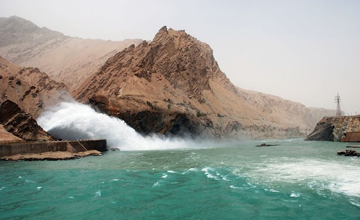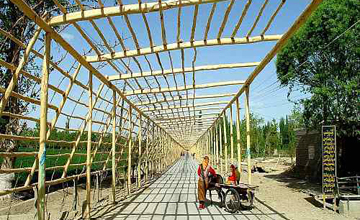Khotan Travel Guide
Located in the southern part of Xinjiang and on the southern fringes of the Taklamakan desert, the Khotan Prefecture covers an area of 189 thousands kilometers, with a population of nearly 180 ten thousands. It has under its administration one city(Hetian) and 7 counties (Pishan, Moyu, Hetian, Lop, Qira, Yutian, and Minfeng). The Khotan Prefecture is the place where the kingdoms of Pishan, Yutian, Yumi, Qulei, Jingjue, and Ronglu were established in ancient times. From the Western Han Dynasty on, it had come officially under the jurisdiction of the Governor-general Government Administrating the Western Countries. In the 2nd year of Shangyuan period of the Tang Dynasty( 675 A .D), the Pisha Superintendent Office was established here. During the Yuan Dynasty, here was the fief of a Mongolian imperial prince. In the 24th year of the Qianlong period of the Qing Dynasty, the Hetian Executive Ministers Office was set up here. In 1977, the Administrative Office of Khotan Prefecture was set up.
Khotan Prefecture is dominated by a dry continental desert climate. It has abundant mineral resources. Khotan jade has been famous for its variety and high quality since ancient times. At present, Khotan Prefecture teems with corn, wheat and rice, and has numerous factories, mines and other enterprises, inclding electric power, coal-mining, silk, cottot textile, carpet-weaving, and cement plants, etc. Civil ariports here link Khotan with Urumqi and other cities and highway communications here is also convenient.
Khotan has a lot of important ancient cultural sites, among them the sites of Yotkan, Niya, Dandan-oiliq, and Malikawat, the Rawak Stupa, and the ancient city of Kara-dong have renowned at home and abroad for a long time.





